Types of Tulsi consist of various varieties of tulsi with different benefits, aromas, taste, and many more characteristics. People recognise Tulsi as Holy basil (Ocimum tenuiflorum) plant that is known for its sacredness, spiritual significance, nutritional worth, and therapeutic uses. It belongs to the mint family (Lamiaceae) and is an aromatic perennial plant, meaning it has a lifespan of two or more years and contains essential oils.
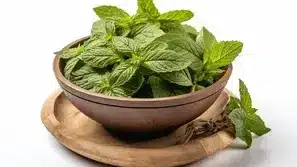
According to Ayurveda, practitioners use various parts of the tulsi plant to treat different health conditions, from improving digestion, mental health, to boosting immunity. So many advantages of tulsi plants make them different from other herbs. People commonly find Holy Basil in Hindu households and temples where they worshipped and use it in Ayurveda for its medicinal properties.
This comprehensive guide will help you deep dive into the type of tulsi, their characteristics,medicinal benefits ,uses and significance in Ayurveda.
Why is the Tulasi Plant Special ?
People also know Tulsi as the ‘Queen of Herbs’ due to its adaptability and benefits. In fact, different tulsi plant varieties exist; moreover, each one has unique characteristics and aromas.
Furthermore, these varieties all offer rich flavors and nutrients. According to some studies, farmers grow different tulsi varieties in different parts and regions.
Traditionally, experts categorized Tulsi into two main groups.
Holy Basil
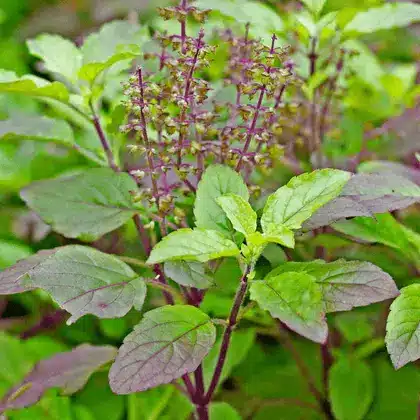
According to Hindu culture,people treat Tulsi as a holy plant and call it holy basil,recognising its spiritual significance and sacredness.
Furthermore, farmers cultivate Indian basil plants for Religious and traditional Medicinal purposes.In addition, they also plant it to use as Herbal Tulsi Tea that practitioners commonly consult in Ayurveda. Notably, healers regard Tulsi in Ayurveda as a natural substance that helps the body adapt and cope with stress and improve overall health; or you can say it as an adaptogen.
In India,There are Five different tulsi varieties.
- Ocimum Tenuiflorum ( Rama Tulsi)
- Ocimum Tenuiflorum (Krishna Tulsi)
- Ocimum Gratissimum (Vana Tulsi)
- Ocimum Tenuiflorum (Kapoor Tulsi)
- Ocimum Tenuiflorum (Amrita Tulsi)
Rama Tulsi
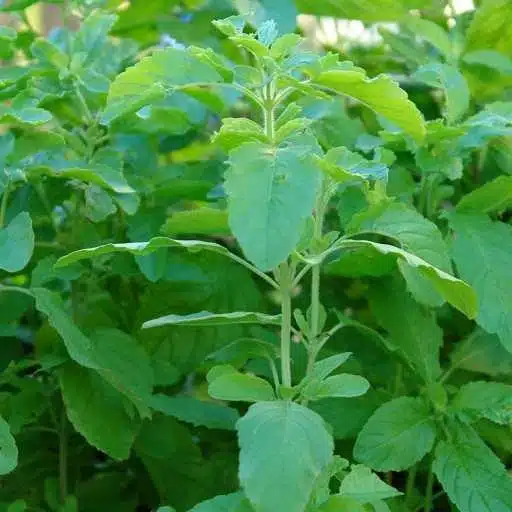
- Different name: They also refer to the Rama Tulsi plant as Ocimum tenuiflorum or Green leaf tulsi or Ram Tulsi.
- Founded: Easily found in most of the Indian Houses and Countries like China , Brazil and as well as Southern States of India.
- Appearance : This type of tulsi has bright green leaves.
- Fragnance : Rama thulasi has a mild and sweet smell.
- Requirement: It grows in sunny areas and requires frequent watering but not in the winter season.
| Rama Tulsi Medicinal uses |
| Rama Tulasi contains adaptogenic and cooling properties that can help 1. To reduce stress & anxiety 2. To create mental clarity. 3. To improve immunity power and digestive system. |
| Rama Tulsi Uses |
| This type of Tulsi is Commonly 1. Used in Tea (Tulsi Tea) preparation. 2. For religious purposes or rituals. 3. For making Ayurvedic remedies for respiratory problems like cough and sore throat. |
Krishna Tulsi
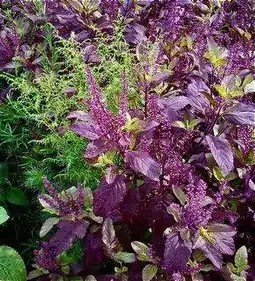
- Different name: The Krishna Tulsi plant is known as Ocimum tenuiflorum or Purple leaf tulsi or Shyama Tulsi or Kali Tulsi.
- Founded : It grows in many regions of India but as compared to Rama Tulsi it is difficult to find.
- Appearance : This type of tulsi has dark purple leaves and is considered as the Holiest and sacred type of tulsi plant.
- Taste : Krishna Tulasi plant has a hot,peppery,crispy taste and is less bitter in taste.
- Fragnance : It has a strong peppery aroma.
- Uses : Commonly used in Ayurvedic medicine .
- What Black Tulsi plants do: They go deep down and reach deep tissues and bring Kapha and Vata back into balance.
| Black tulsi Medicinal uses |
| Compared to Rama Tulsi, the Krishna Tulasi plant has more medicinal uses, such as antibacterial, antimicrobial, antioxidant, and antiviral properties. 1. It is given to people who have Colds and Coughs. 2. It helps manage high fever. 3. It is good for heart and diabetic patients. 4. It helps maintain blood sugar and cholesterol levels. |
| Growth Requirement |
| The Krishna Tulasi plant grows and develops well in bright sunlight.It needs daily watering like every day in summer,alternate days in spring and autumn and once a week in winter. |
Vana Tulsi
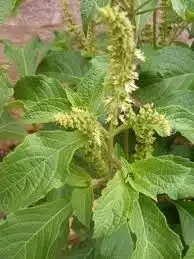
It is a common Culinary herb used in West Africa.
- Different name: The Vana Tulsi plant is known as Ocimum Gratissimum , African basil, Clove basil, In Hawaii (wild basil), Tchay (Fon), Maduruthala (Sri Lanka), Bai yeera (Thailand), and many more.
- Founded: This type of tulsi grows in the Himalayas(India), Sri Lanka , Java and northern and eastern part of Africa or growing wild in forest.
- Appearance : It has green leaves and is perennial plants which means that it has 2 years or more of life span.
- Fragrance : Vana Tulsi has a strong and lemony smell or you can say aroma.
- Uses : Commonly used in Herbal Tea (Tulsi Tea) and for making home remedies for respiratory problems like cough and sore throat.
| Health and Medicinal uses |
| People also know the Vana Tulsi plant for its adaptogen properties. Similarly, it shares the same characteristics with Rama Tulsi and Krishna Tulsi. Furthermore, both have numerous health and medical uses. It also has many benefits like – 1. The Vana Tulsi is helpful in respiratory problems like breathing problems. 2. It acts as a natural detoxifier that cleanses the liver and kidneys of the human body. 3. Vana Tulsi helps to clean the air and improve the quality of it. 4. Helps in Digestive issues. 5. It contains adaptogenic and cooling properties that can help to reduce stress & anxiety. |
| Requirement |
| The Vana Tulsi required some things like: 1. Holy basil Vana does not grow indoors. 2. It should be kept outside. 3. Grows best in sunlight. 4. It needs to be watered daily except during the winter season. |
Kapoor Tulsi
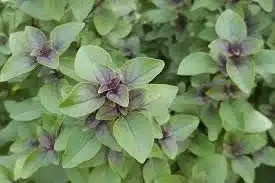
The Kapoor Tulsi is easiest to grow and it also attracts bees.
- Different name : The Kapoor tulsi plant is known as Ocimum tenuiflorum.
- Founded : It is founded in tropical and subtropical Asia and also in the US.
- Requirement : It grows in sunny areas and is resistant to water.
- Fragnance : Kapur tulsi has a strong scent and toothed leaves.
- Appearance : It has light green leaves and is shorter than usual.
- Health and Medicinal uses : The kapoor tulsi plant helps to relax and improve sleep cycle.
| The Kapoor Tulsi Uses |
| Commonly used in 1. For religious purposes. 2. For making home remedies for respiratory problems like cough and sore throat. 3. For essential oils. |
Amrita Tulsi
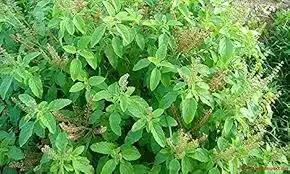
- Different name : The Amrita tulsi plant is known as Ocimum tenuiflorum.
- Founded : Amritpuri (Southern India)
- Requirement : It grows in sunny areas and is resistant to water.
- Fragnance : Slightly sweet smell
- Appearance : It is just like the Rama Tulsi type but more strong and healthy. The amrita tulsi has medium sized green leaves.
- Health and Medicinal uses : This type of tulsi help to improve immunity power and digestive system and has anti-inflammatory and antioxidant properties.
- Uses : Commonly used in ayurvedic medicine and herbal remedies.
Benefits of Tulsi Varieties
Each type of Tulsi has benefits, some are similar, and some are different, like:
- Rama Tulsi: One of the benefits of tulsi is that it contains adaptogenic properties which help you deal with stress and anxiety and help to improve immunity power.
- Krishna Tulsi: It provides antibacterial, antimicrobial, and antiviral properties. It benefits the heart and diabetic people and helps maintain blood sugar and cholesterol levels.
- Vana Tulsi: It cleans the air and improves the quality of it and detoxifies the body.
- Kapoor Tulsi: It helps to relax and improve sleep cycle and
- Amrita Tulsi: This Tulsi is helpful for the digestive system and improves metabolic health .
Mediterranean basil
Thai Basil
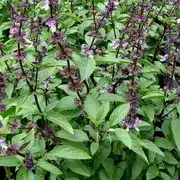
| Ocimum Thyrsiflora (Thai Basil) |
| Founded : Famous basil in Asia and grown in countries like Thailand,Vietnam,Cambodia and Taiwan. Taste : Thai Basil tastes more like mint basil and can be bitter. Used in : Thai curry. |
American Basil

| Ocimum Americanum (American Basil) |
| Appearance : Green basil leaves with purple stem and narrow in shape which occasionally blooms Fragnance : Leaves smell very strong. Used in : Whenever American basil is any culinary dish it has the taste of curry which is very strong and has a pinch of minty flavour. |
Lemon Basil
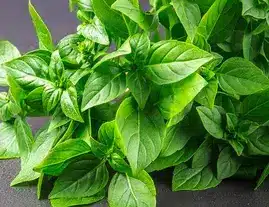
| Ocimum Citriodorum (Lemon Basil) |
| Type : Lemon basil has 2 years or more of life span (perennial basil). Fragrance : Has a lemon scent and its stalk leaves blossoms have a lemon fragrance. Appearance : Dark green leaves |
Italian Genovese Basil
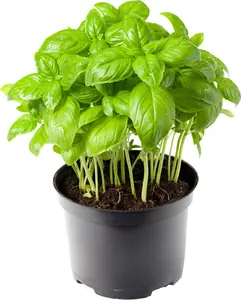
| Ocimum Basilicum (Italian Genovese Basil) |
| It is traditional european basil Appearance : Has dark green leaves and roots is bigger in size Used in : It is popular and highly used in culinary for eg. in pesto Fragrance : It has a delightful smell. |
African Blue Basil
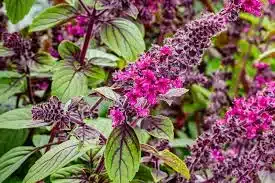
| Ocimum Klimandscharicum (African Blue Basil) |
| Type : Has 2 years or more of life span (perennial basil) and is edible. Aromatic – African Blue Basil has strong camphor aroma Used in : It is not only a Culinary basil but also an attraction of gardens. Appearance : Easy to spot because it has beautiful purple flowers and green leaves. |
Purple Basil
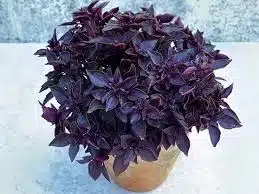
| Ocimum Basilicum (Purple Basil ) |
| Type: Purple Basil belongs to the mint family (Lamiaceae) and is a flowering plant. In addition, it is an aromatic perennial plant, which means that it has 2 years or more and contains an aromatic compound especially essential oils. |
Sweet Basil
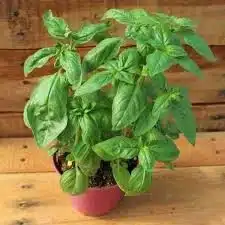
| Ocimum Basilicum (Sweet Basil) |
| Type : Has 2 years or more of life span (perennial basil) Grows : Sweet Basil plant grows annually. Appearance : Differentiated by large leaves and white flowers. |
Tulsi vs. Basil: Understanding the Difference
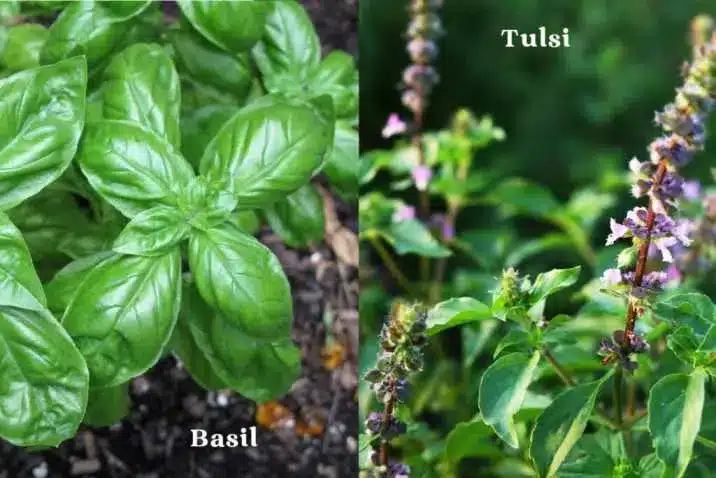
If we talk about the difference of tulsi v/s basil then we should know that they both have the same starting name which is Ocimum and both herbs belong to the same family i.e. Lamiaceae which comprises mint plants and culinary herbs like rosemary , oregano, lavender catnip etc.
| Feature | Tulsi | Basil |
| Region | Indian Sub- continent | West (thailand) |
| Used In | Herbal tea and Ayurvedic Remedies. | Western cuisines recipes |
| Properties | Adaptogen, Detoxifier, Antioxidant. | Culinary Herb |
| Types | Rama,Krishna,Vana,Kapoor and Amrita tusli | Thai,Sweet,African,Italian, American,Lemon and Purple Basil |
Tulsi Vrindavan : Spiritual and Environmental Importance
One of the advantages of tulsi is that it has spiritual and environmental importance. Firstly, in Hindu houses,people plant tulsi in the centre of courtyard due to the following reasons-
Environment Purification
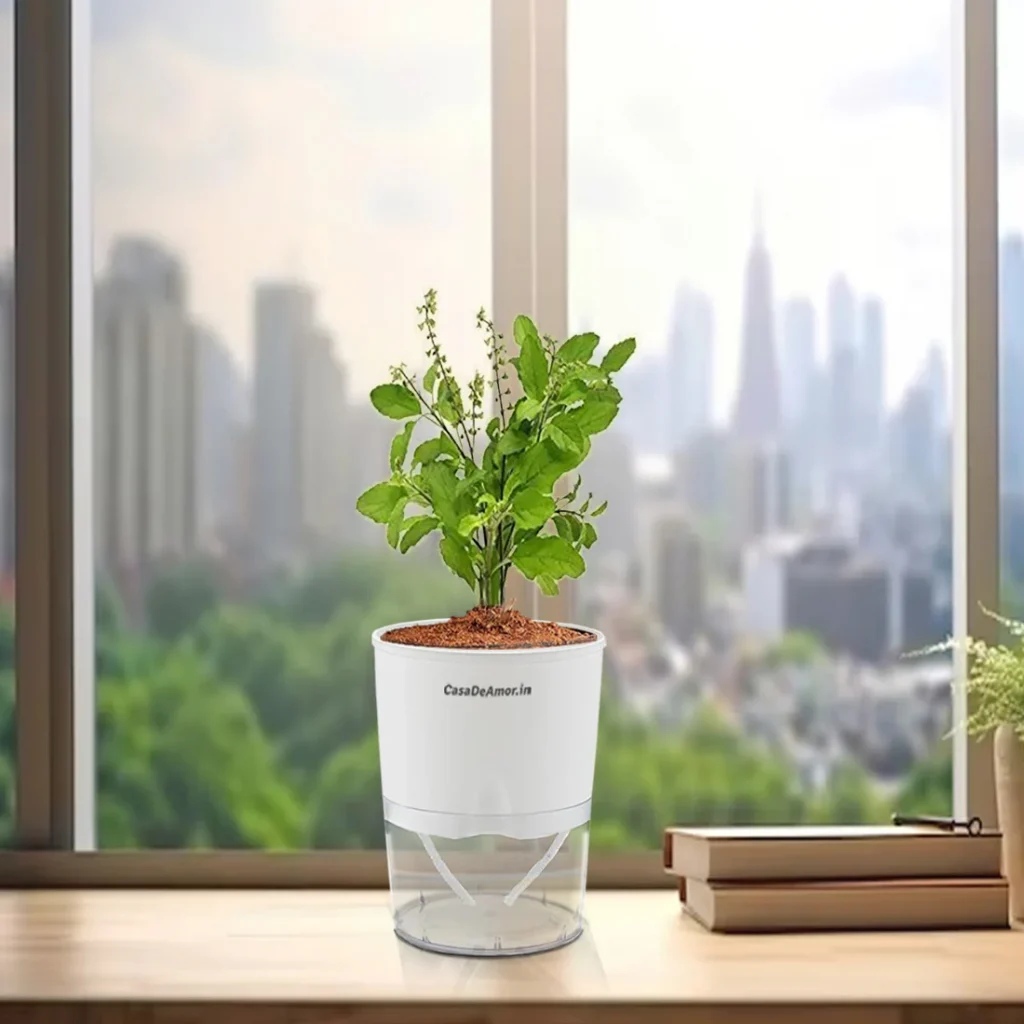
It has the ability to purify the air by a good amount of oxygen and tends to absorb the harmful carbon dioxide which automatically leads to the improvement of a household’s air quality.
Warding off Negative Energy

People believe that plants can ward off negative energies and let positive energy and vibration enter into homes.
Architectural Role
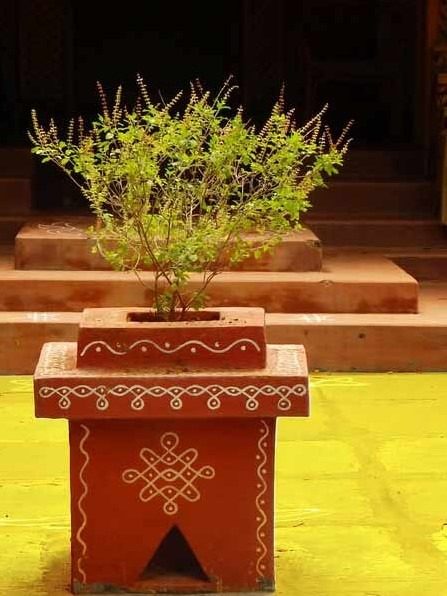
Usually in Traditional Indian homes the courtyard or Aangan is treated as a heart of the house and planting the tulsi there can lead to spiritual practices into daily life.
Refreshing Climate
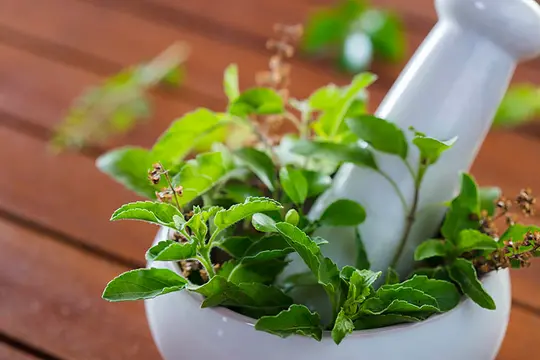
The Tulsi plant cools and refreshes the climate of the house, especially regions that are warm.
Connection to Nature
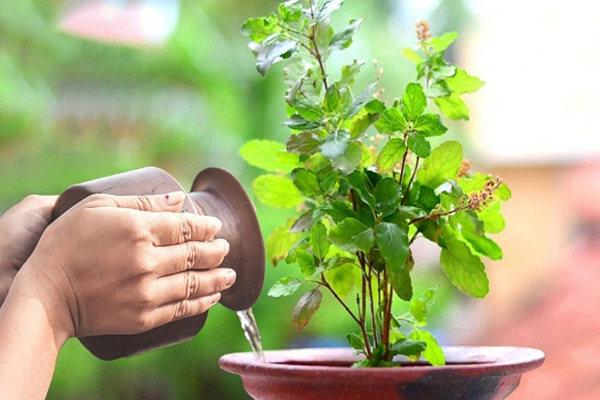
It helps family members to reconnect with nature by watering ,worshipping and also creating a habit of taking care of Tulsi plants or doing some activities of Tulsi plant care as a part of their daily routine.
Tulsi products with Practical Application
There are so many Tulsi products that are used in making tea,skin and hair care and many more.
Herbal Tea
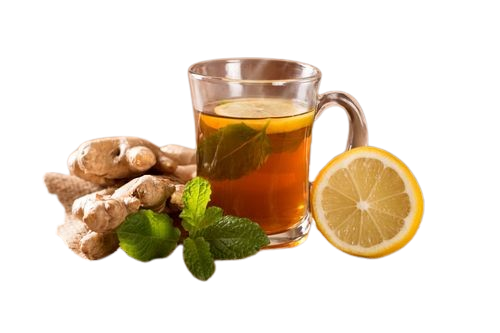
According to Ayurveda, Tulsi tea is an herbal infusion without any caffeine, full of nutrients and antioxidants.
Tulsi Powder

Tulsi leaves are dried up and ground into powder. Then this powder is:
- Used as Face masks ,
- Mixed in smoothies,
- Put in boiling water to help to ease the pain of sore throat.
Tulsi Oils
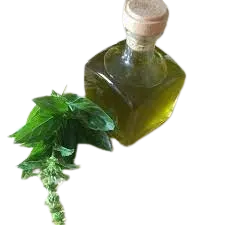
Holy basil oil is extracted from the leaves and then:-
- Used for its antimicrobial and anti-inflammatory properties.
- It is applied to skin infections or other skin issues.
- It is used for Aromatherapy and massages.
- Applied to relieve joint pains.
- It can also be applied when one is suffering from Headache.
Ayurvedic Tulsi Drops
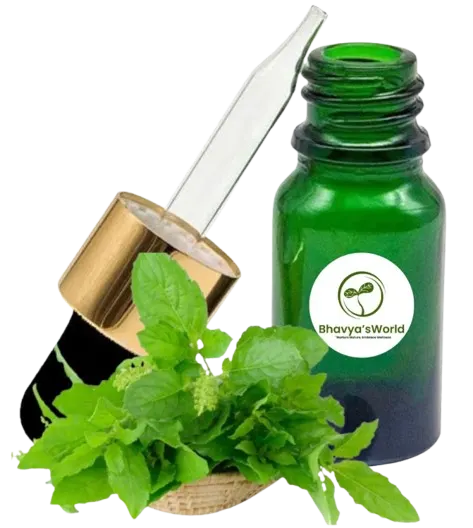
Its drops are put in the eyes for good eyesight.
Conclusion
In this blog, we have discussed different types of tulsi, such as Rama, Krishna, Vana, and many more. Additionally, we have explored different varieties of basil, including Thai, African, Lemon, etc. Each of them has its importance and significance. For instance, some are used for ritual purposes, while others are used for decoration. Furthermore, some are used in culinary dishes, and some are used for medicinal purposes.
“Each variety of Tulsi has unique benefits! Discover them in our next blog on Benefits of Tulsi!”


